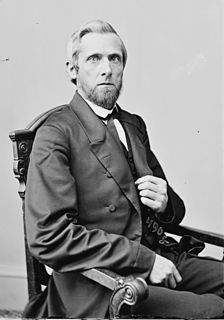| Reporting mark | M&K |
|---|---|
| Locale | Monongalia and Preston Counties, West Virginia, United States |
| Dates of operation | 1899–1920 |
| Successor | Baltimore and Ohio Railroad |
| Track gauge | 4 ft 8 1⁄2 in (1,435 mm) standard gauge |
| Length | 47.9 mi (77.1 km) |
| Headquarters | Morgantown, West Virginia |
The Morgantown and Kingwood Railroad (reporting mark M&K) was a railroad in West Virginia in the United States. It extended from the Baltimore and Ohio Railroad (B&O) junction in Morgantown in Monongalia County via Masontown, Kingwood and Rowlesburg to the M&K junction with the B&O in Preston County, a distance of 47.9 mi (77.1 km). [1] [2] The M&K also operated approximately 5 mi (8.0 km) of branch lines along the route. [3]

West Virginia is a state located in the Appalachian region in the Southern United States that is also considered to be a part of the Middle Atlantic States. It is bordered by Pennsylvania to the north, Maryland to the east and northeast, Virginia to the southeast, Kentucky to the southwest, and Ohio to the northwest. West Virginia is the 41st largest state by area, and is ranked 38th in population. The capital and largest city is Charleston.

The United States of America (USA), commonly known as the United States or America, is a country comprising 50 states, a federal district, five major self-governing territories, and various possessions. At 3.8 million square miles, the United States is the world's third or fourth largest country by total area and is slightly smaller than the entire continent of Europe's 3.9 million square miles. With a population of over 327 million people, the U.S. is the third most populous country. The capital is Washington, D.C., and the largest city by population is New York City. Forty-eight states and the capital's federal district are contiguous in North America between Canada and Mexico. The State of Alaska is in the northwest corner of North America, bordered by Canada to the east and across the Bering Strait from Russia to the west. The State of Hawaii is an archipelago in the mid-Pacific Ocean. The U.S. territories are scattered about the Pacific Ocean and the Caribbean Sea, stretching across nine official time zones. The extremely diverse geography, climate, and wildlife of the United States make it one of the world's 17 megadiverse countries.

The Baltimore and Ohio Railroad was the first common carrier railroad and the oldest railroad in the United States, with its first section opening in 1830. It came into being mostly because the city of Baltimore wanted to compete with the newly constructed Erie Canal and another canal being proposed by Pennsylvania, which would have connected Philadelphia and Pittsburgh. At first this railroad was located entirely in the state of Maryland, with an original line built from the port of Baltimore west to Sandy Hook.
The M&K was completed in three stages: Morgantown to Bretz was completed in September 1903, Bretz to Kingwood in March 1906, and Kingwood to Rowlesburg in July 1907. [1] The route followed the course of Deckers Creek to Kingwood. The M&K had shops and a yard at Sabraton. [4]

Bretz is an unincorporated community in Preston County, West Virginia.

Deckers Creek is a 24.6-mile-long (39.6 km) tributary of the Monongahela River that runs through north-central West Virginia. It begins west of Arthurdale and flows southeast, then north, then northwest towards Morgantown, where it empties into the Monongahela River. The stream has been contaminated by various sources, though largely due to extractive resource mining and improper sewage disposal. Recently, a conservation effort has been launched and conditions are improving, as the area continues to develop for recreational purposes.
The line primarily carried coal, building stone, glass sand and lumber. [1] By 1906 the line provided a twice-daily passenger service to Kingwood. [4] It was a key stimulus in the economic development of the region at the turn of the 20th century. [3]














